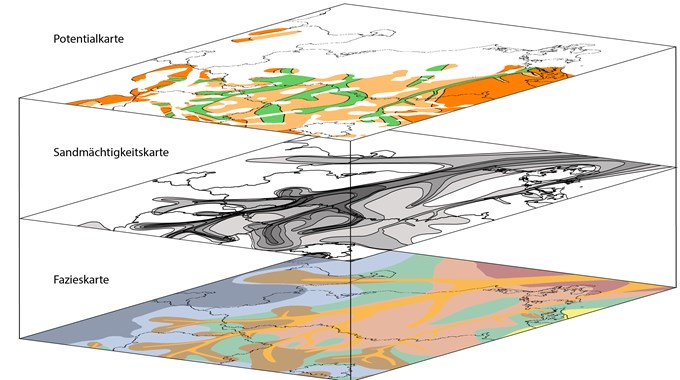Sedimentology and Facies Analysis
GTN has more than 25 years of experience in sedimentological processing and facies analysis of clastic and carbonate systems. In the North German Basin, clastic sandstone aquifers form the main reservoirs and occur in the Buntsandstein, Keuper, Lower and Middle Jurassic and Lower Cretaceous. In the South German Molasse Basin, the Upper Jurassic carbonates form fracture-dominated aquifer reservoirs.

GTN’s long experience with sedimentological processing of aquifers ranges from detailed grain size analysis, sediment petrography and clay mineralogy to geochemistry and modern facies analysis. Our experience does not focus on deep drilling only (drill cores and well logging curves), but also on the processing of developments. These so-called analogue studies serve to better understand the spatial extent of the individual deposition units.
Sandstone aquifers differ significantly from carbonate, fracture-dominated aquifers. Sandstone aquifers are pore reservoirs whose geothermal use depends essentially on the thickness and petrophysical properties of the sandstones. The thickness and also the sediment petrographic/petrophysical properties are again strongly controlled by the deposition process.
Modern sedimentological facies analysis makes use of this by analysing the sedimentological parameters in order to deduce the deposition processes and deposition spaces thus increasing the prediction accuracy (probability of prediction) of reservoirs. The former deposition areas can be mapped widely, so that the prediction accuracy in geothermal exploration is increased.
- Sedimentological and facies investigations of siliciclastics
- Sedimentological and facies investigations of carbonate rocks
- Sedimentological and facies interpretation of well logging curves
- Petrophysical investigation of sandstones and carbonates
The modern sedimentological facies analysis serves as a key to the reduction of the exploration risk